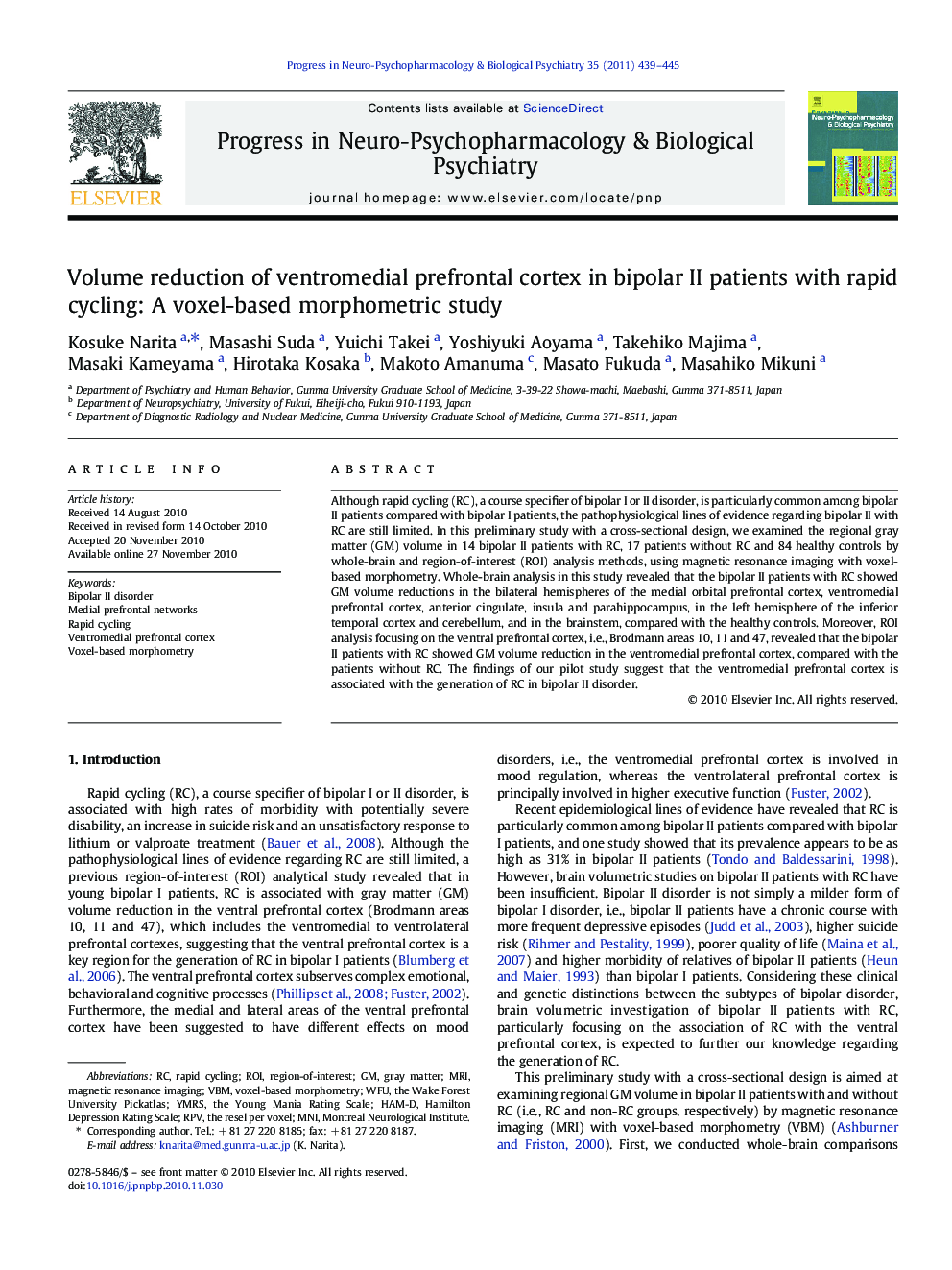| کد مقاله | کد نشریه | سال انتشار | مقاله انگلیسی | نسخه تمام متن |
|---|---|---|---|---|
| 5845150 | 1128044 | 2011 | 7 صفحه PDF | دانلود رایگان |

Although rapid cycling (RC), a course specifier of bipolar I or II disorder, is particularly common among bipolar II patients compared with bipolar I patients, the pathophysiological lines of evidence regarding bipolar II with RC are still limited. In this preliminary study with a cross-sectional design, we examined the regional gray matter (GM) volume in 14 bipolar II patients with RC, 17 patients without RC and 84 healthy controls by whole-brain and region-of-interest (ROI) analysis methods, using magnetic resonance imaging with voxel-based morphometry. Whole-brain analysis in this study revealed that the bipolar II patients with RC showed GM volume reductions in the bilateral hemispheres of the medial orbital prefrontal cortex, ventromedial prefrontal cortex, anterior cingulate, insula and parahippocampus, in the left hemisphere of the inferior temporal cortex and cerebellum, and in the brainstem, compared with the healthy controls. Moreover, ROI analysis focusing on the ventral prefrontal cortex, i.e., Brodmann areas 10, 11 and 47, revealed that the bipolar II patients with RC showed GM volume reduction in the ventromedial prefrontal cortex, compared with the patients without RC. The findings of our pilot study suggest that the ventromedial prefrontal cortex is associated with the generation of RC in bipolar II disorder.
Research Highlight⺠Bipolar patients with rapid cycling showed ventromedial prefrontal cortex reduction. ⺠This GM area is suggested to associate with generation of mood swings. ⺠This study might further our understanding of the cause of rapid mood swings.
Journal: Progress in Neuro-Psychopharmacology and Biological Psychiatry - Volume 35, Issue 2, 30 March 2011, Pages 439-445